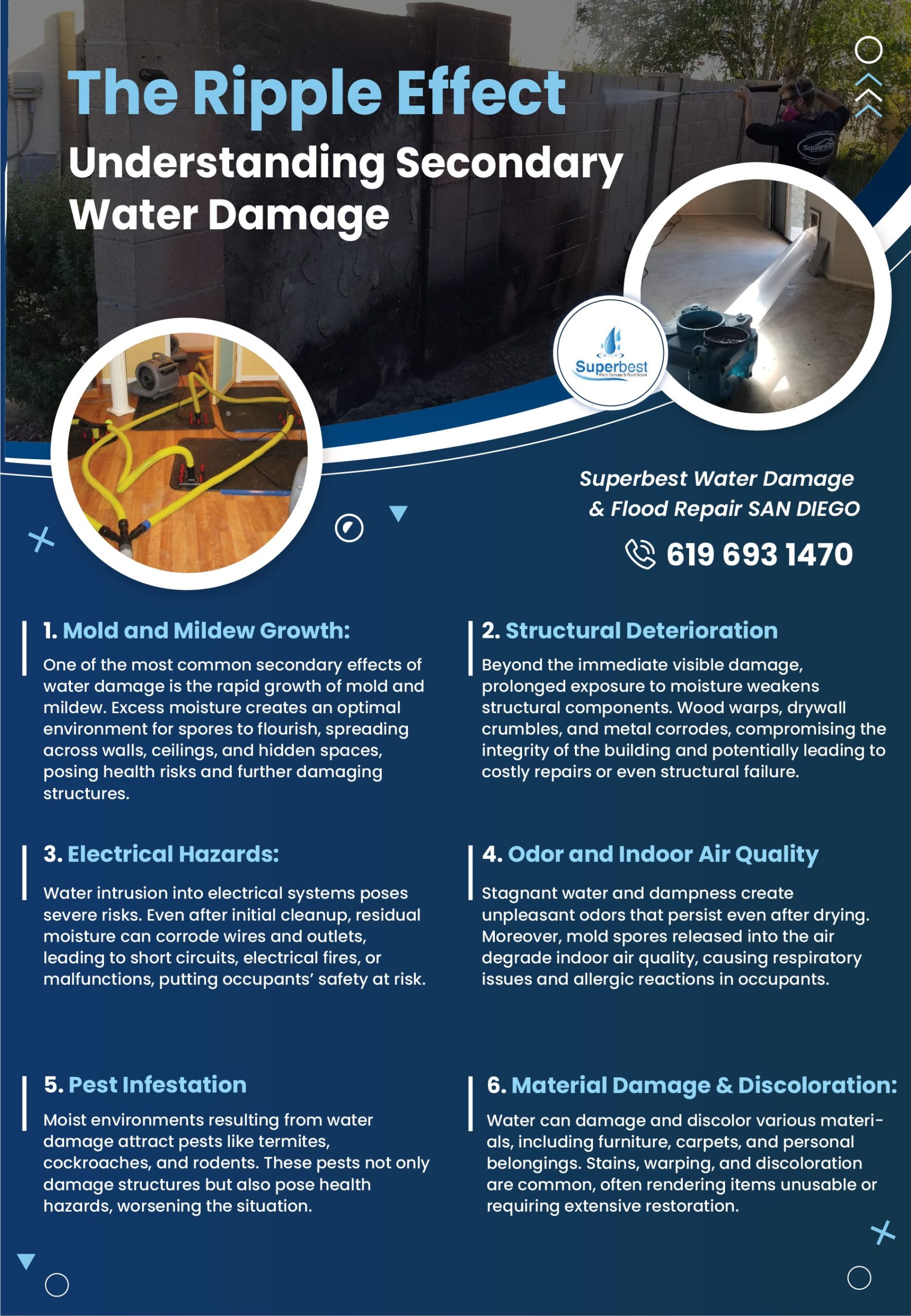Water damage doesn’t just stop with visible wetness or immediate structural issues; it often sets off a chain reaction of secondary damages that can intensify the initial impact. Understanding these secondary effects is crucial in comprehending the full scope of water damage:
1. Mold and Mildew Growth
One of the most common secondary effects of water damage is the rapid growth of mold and mildew. Excess moisture creates an optimal environment for spores to flourish, spreading across walls, ceilings, and hidden spaces, posing health risks and further damaging structures.
2. Structural Deterioration
Beyond the immediate visible damage, prolonged exposure to moisture weakens structural components. Wood warps, drywall crumbles, and metal corrodes, compromising the integrity of the building and potentially leading to costly repairs or even structural failure.
3. Electrical Hazards
Water intrusion into electrical systems poses severe risks. Even after initial cleanup, residual moisture can corrode wires and outlets, leading to short circuits, electrical fires, or malfunctions, putting occupants’ safety at risk.
4. Odor and Indoor Air Quality
Stagnant water and dampness create unpleasant odors that persist even after drying. Moreover, mold spores released into the air degrade indoor air quality, causing respiratory issues and allergic reactions in occupants.
 5. Pest Infestation
5. Pest Infestation
Moist environments resulting from water damage attract pests like termites, cockroaches, and rodents. These pests not only damage structures but also pose health hazards, worsening the situation.
6. Material Damage and Discoloration
Water can damage and discolor various materials, including furniture, carpets, and personal belongings. Stains, warping, and discoloration are common, often rendering items unusable or requiring extensive restoration.
Preventive Measures
Understanding the secondary effects of water damage emphasizes the importance of swift and thorough mitigation. Proper drying, dehumidification, and professional restoration efforts can mitigate these secondary damages, preventing further harm to structures and occupants’ health.
Conclusion
Water damage’s ripple effect extends far beyond initial wetness, causing a cascade of secondary damages. Recognizing these secondary effects underscores the urgency of comprehensive restoration, ensuring that both visible damage and hidden risks are effectively addressed.
For expert mitigation and comprehensive restoration services, trust SuperBestWaterDamageFloodRepairSanDiego. Our specialized team is equipped to mitigate water damage and prevent secondary effects, safeguarding your property and well-being.
